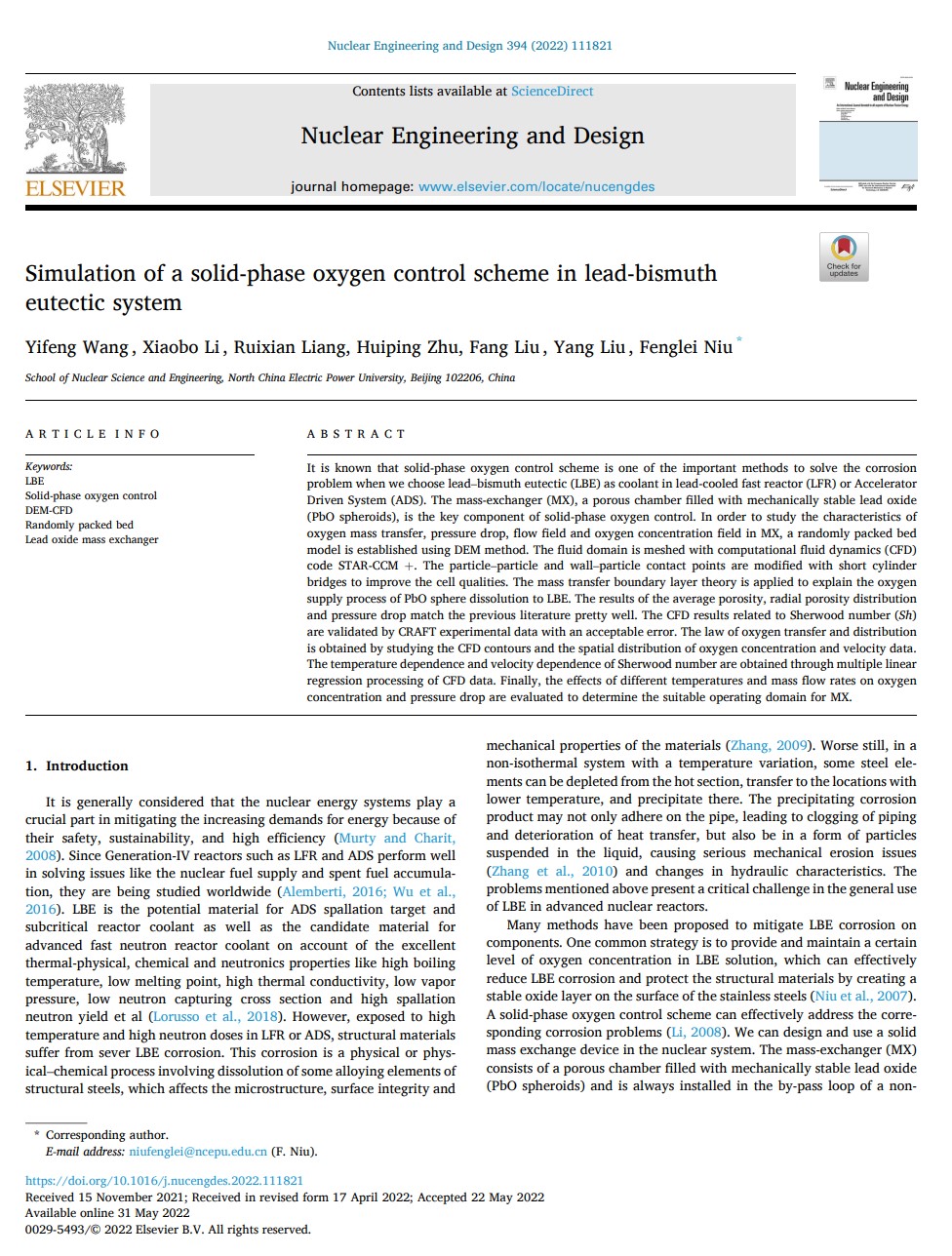It is known that solid-phase oxygen control scheme is one of the important methods to solve the corrosion problem when we choose lead–bismuth eutectic (LBE) as coolant in lead-cooled fast reactor (LFR) or Accelerator Driven System (ADS). The mass-exchanger (MX), a porous chamber filled with mechanically stable lead oxide (PbO spheroids), is the key component of solid-phase oxygen control. In order to study the characteristics of oxygen mass transfer, pressure drop, flow field and oxygen concentration field in MX, a randomly packed bed model is established using DEM method. The fluid domain is meshed with computational fluid dynamics (CFD) code STAR-CCM+. The particle–particle and wall–particle contact points are modified with short cylinder bridges to improve the cell qualities. The mass transfer boundary layer theory is applied to explain the oxygen supply process of PbO sphere dissolution to LBE. The results of the average porosity, radial porosity distribution and pressure drop match the previous literature pretty well. The CFD results related to Sherwood number (Sh) are validated by CRAFT experimental data with an acceptable error. The law of oxygen transfer and distribution is obtained by studying the CFD contours and the spatial distribution of oxygen concentration and velocity data. The temperature dependence and velocity dependence of Sherwood number are obtained through multiple linear regression processing of CFD data. Finally, the effects of different temperatures and mass flow rates on oxygen concentration and pressure drop are evaluated to determine the suitable operating domain for MX.
